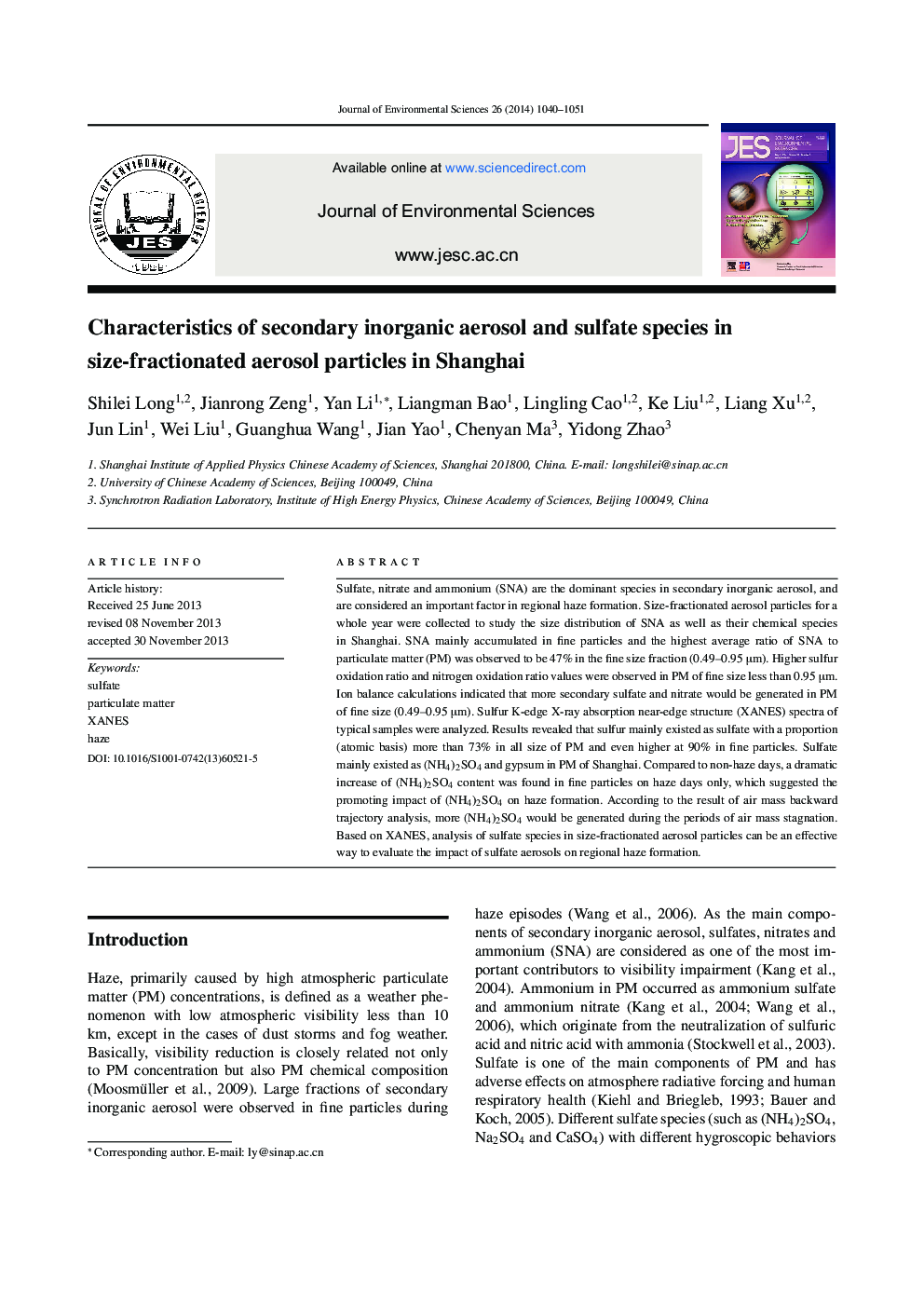| کد مقاله | کد نشریه | سال انتشار | مقاله انگلیسی | نسخه تمام متن |
|---|---|---|---|---|
| 4454142 | 1312470 | 2014 | 12 صفحه PDF | دانلود رایگان |
Sulfate, nitrate and ammonium (SNA) are the dominant species in secondary inorganic aerosol, and are considered an important factor in regional haze formation. Size-fractionated aerosol particles for a whole year were collected to study the size distribution of SNA as well as their chemical species in Shanghai. SNA mainly accumulated in fine particles and the highest average ratio of SNA to particulate matter (PM) was observed to be 47% in the fine size fraction (0.49–0.95 μm). Higher sulfur oxidation ratio and nitrogen oxidation ratio values were observed in PM of fine size less than 0.95 μm. Ion balance calculations indicated that more secondary sulfate and nitrate would be generated in PM of fine size (0.49–0.95 μm). Sulfur K-edge X-ray absorption near-edge structure (XANES) spectra of typical samples were analyzed. Results revealed that sulfur mainly existed as sulfate with a proportion (atomic basis) more than 73% in all size of PM and even higher at 90% in fine particles. Sulfate mainly existed as (NH4)2SO4 and gypsum in PM of Shanghai. Compared to non-haze days, a dramatic increase of (NH4)2SO4 content was found in fine particles on haze days only, which suggested the promoting impact of (NH4)2SO4 on haze formation. According to the result of air mass backward trajectory analysis, more (NH4)2SO4 would be generated during the periods of air mass stagnation. Based on XANES, analysis of sulfate species in size-fractionated aerosol particles can be an effective way to evaluate the impact of sulfate aerosols on regional haze formation.
Journal: Journal of Environmental Sciences - Volume 26, Issue 5, May 2014, Pages 1040-1051
